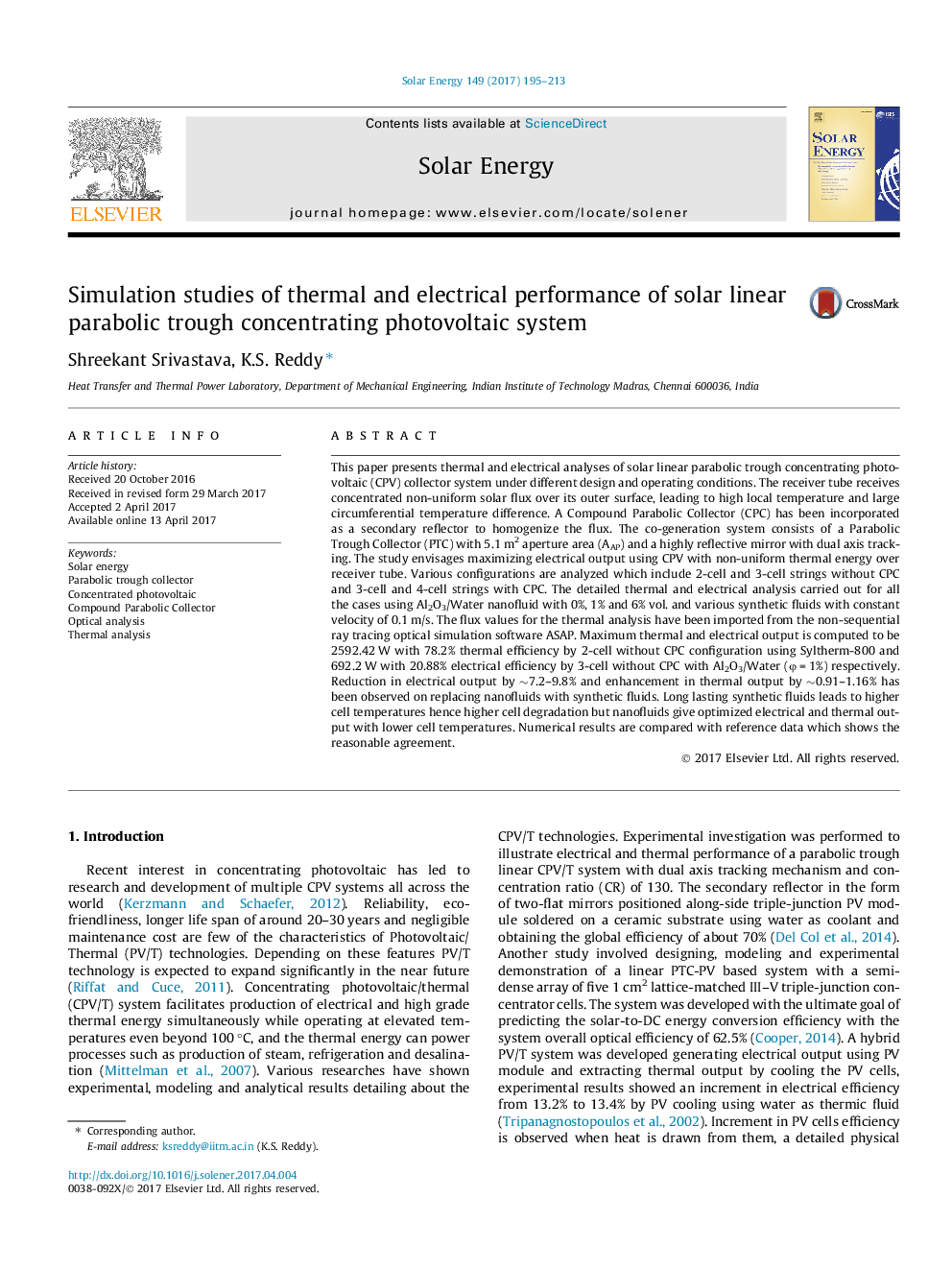| کد مقاله | کد نشریه | سال انتشار | مقاله انگلیسی | نسخه تمام متن |
|---|---|---|---|---|
| 5451081 | 1513069 | 2017 | 19 صفحه PDF | دانلود رایگان |
عنوان انگلیسی مقاله ISI
Simulation studies of thermal and electrical performance of solar linear parabolic trough concentrating photovoltaic system
ترجمه فارسی عنوان
مطالعات شبیه سازی عملکرد حرارتی و الکتریکی پارابولیک خطی خورشیدی با تمرکز بر سیستم فتوولتائیک
دانلود مقاله + سفارش ترجمه
دانلود مقاله ISI انگلیسی
رایگان برای ایرانیان
کلمات کلیدی
انرژی خورشیدی، جمع کننده پارابولیک، فتوولتائیک متمرکز گردآورنده پابلیک تلفیقی، تجزیه و تحلیل نوری، تجزیه و تحلیل حرارتی،
موضوعات مرتبط
مهندسی و علوم پایه
مهندسی انرژی
انرژی های تجدید پذیر، توسعه پایدار و محیط زیست
چکیده انگلیسی
This paper presents thermal and electrical analyses of solar linear parabolic trough concentrating photovoltaic (CPV) collector system under different design and operating conditions. The receiver tube receives concentrated non-uniform solar flux over its outer surface, leading to high local temperature and large circumferential temperature difference. A Compound Parabolic Collector (CPC) has been incorporated as a secondary reflector to homogenize the flux. The co-generation system consists of a Parabolic Trough Collector (PTC) with 5.1Â m2 aperture area (AAP) and a highly reflective mirror with dual axis tracking. The study envisages maximizing electrical output using CPV with non-uniform thermal energy over receiver tube. Various configurations are analyzed which include 2-cell and 3-cell strings without CPC and 3-cell and 4-cell strings with CPC. The detailed thermal and electrical analysis carried out for all the cases using Al2O3/Water nanofluid with 0%, 1% and 6% vol. and various synthetic fluids with constant velocity of 0.1Â m/s. The flux values for the thermal analysis have been imported from the non-sequential ray tracing optical simulation software ASAP. Maximum thermal and electrical output is computed to be 2592.42Â W with 78.2% thermal efficiency by 2-cell without CPC configuration using Syltherm-800 and 692.2Â W with 20.88% electrical efficiency by 3-cell without CPC with Al2O3/Water (ÏÂ =Â 1%) respectively. Reduction in electrical output by â¼7.2-9.8% and enhancement in thermal output by â¼0.91-1.16% has been observed on replacing nanofluids with synthetic fluids. Long lasting synthetic fluids leads to higher cell temperatures hence higher cell degradation but nanofluids give optimized electrical and thermal output with lower cell temperatures. Numerical results are compared with reference data which shows the reasonable agreement.
ناشر
Database: Elsevier - ScienceDirect (ساینس دایرکت)
Journal: Solar Energy - Volume 149, June 2017, Pages 195-213
Journal: Solar Energy - Volume 149, June 2017, Pages 195-213
نویسندگان
Shreekant Srivastava, K.S. Reddy,
